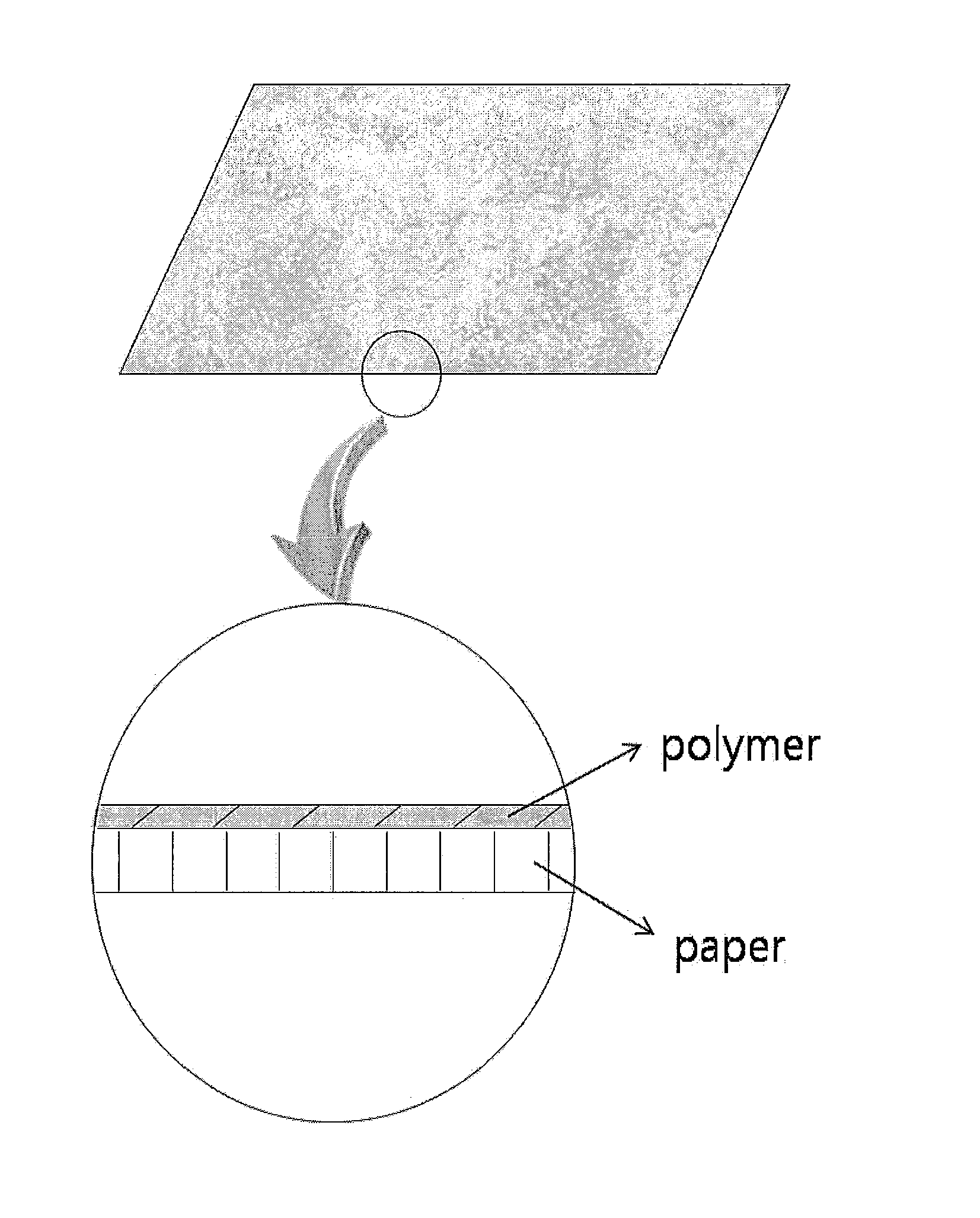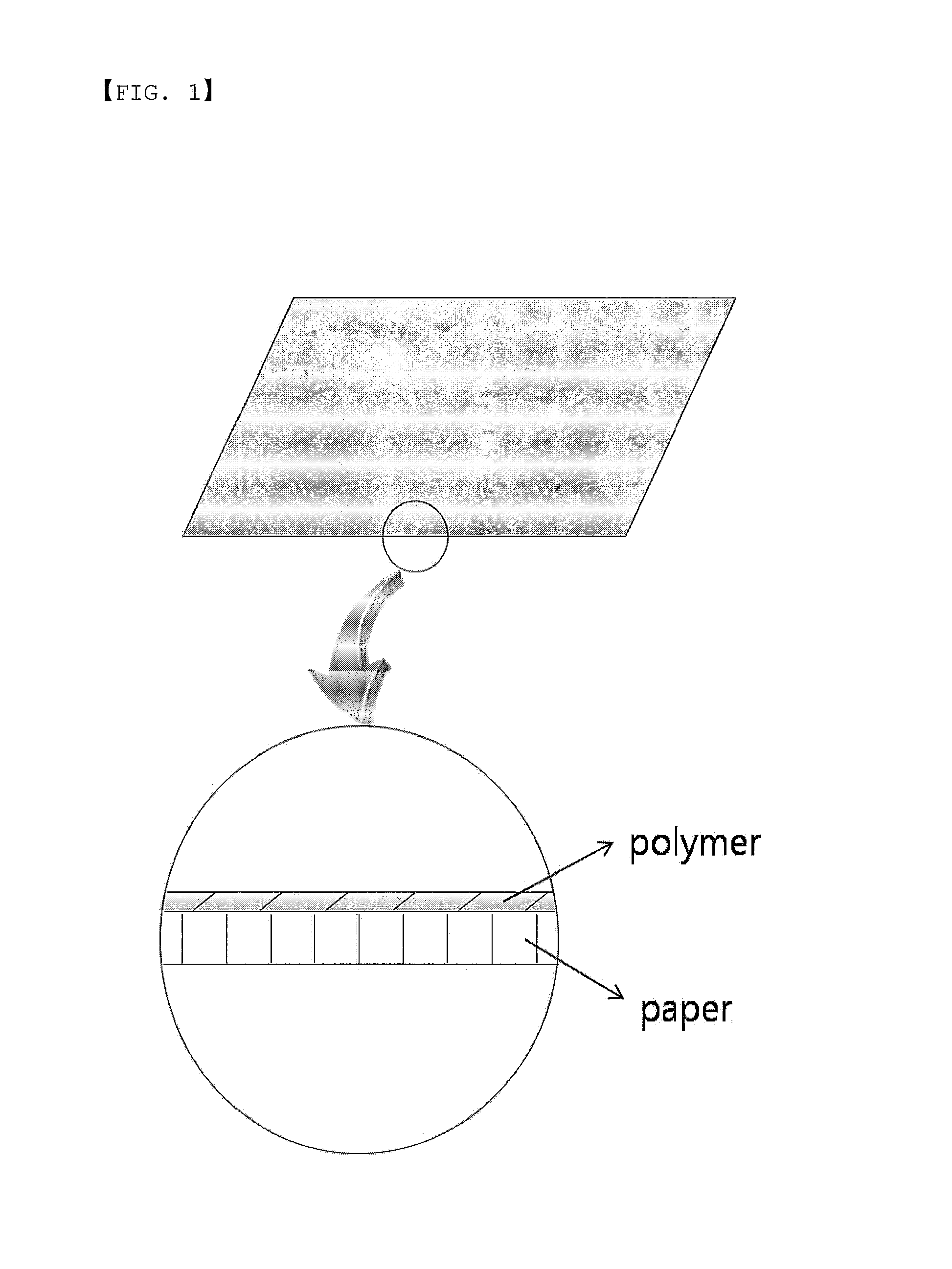Composition for Paper Coating
- Summary
- Abstract
- Description
- Claims
- Application Information
AI Technical Summary
Benefits of technology
Problems solved by technology
Method used
Image
Examples
preparing example 2
Synthesis of Complex Compound 2
[0021]Complex compound 2 was synthesized by Chemical formula 3. Compound B was synthesized according to a known method (Bull. Korean Chem. Soc. 2009, 30, 745-748).
[0022]Synthesis of Compound C
[0023]Compound B (100 mg, 0.054 mmol) and AgNO3 (37.3 mg, 0.219 mmol) were dissolved in ethanol (3 mL), followed by stirring overnight. The resulting mixture was filtered by using cellite, thereby removing AgI generated. The resulting material was subjected to reduced pressure to remove a solvent, thereby obtaining yellow solid powder type compound C (0.80 g, 94%).
[0024]1H NMR (CDCl3): δ13.51 (s, 2H, OH) 8.48 (s, 2H, CH═N), 7.15 (s, 4H, m-H), 3.44 (br, 2H, cyclohexyl-CH), 3.19 (br, 32H, NCH2) 2.24 (s, 6H, CH3), 1.57-1.52 (br, 4H, cyclohexyl-CH2) 1.43-1.26 (br, 74H), 0.90-0.70 (br, 36H, CH3) ppm.
[0025]Synthesis of Complex Compound 2
[0026]Compound C (95 mg, 0.061 mmol) and Co(OAc)2 (10.7 mg, O. 061 mmol) were put into a flask, and dissolved by addition of 3 mL of me...
preparing example 3
Synthesis of Copolymer (PPC) Using Carbon Dioxide / Propylene Oxide
[0029]Propylene oxide (1162 g, 20.0 mol), in which the complex compound 1 (0.454 g, which is an amount calculated according to a monomer / catalyst ratio) was dissolved, was injected to 3 L of an autoclave reactor through a cannula. The complex compound 1 prepared according to the preparing example 1 was used as the complex compound. Carbon dioxide was input to the reactor at a pressure of 17 bar, and the resulting mixture was stirred within a circulation water bath of a temperature previously set to 70° C. while increasing the temperature of the reactor. After 30 minutes, the time point when a pressure of the carbon dioxide starts to fall was recorded, and reaction is performed for 2 hours from the time point, followed by degassing of carbon dioxide, thereby finishing the reaction. 830 g of propylene oxide was further added into the viscous solution thus obtained, thereby lowering viscosity of the solution. Then the res...
preparing example 4
Synthesis of Copolymer (PPC) Using Carbon Dioxide / Propylene Oxide
[0030]Propylene oxide (1162 g, 20.0 mol), in which the complex compound 2 (0.224 g, which is an amount calculated according to a monomer / catalyst ratio) was dissolved, was injected to 3 L of an autoclave reactor through a cannula. The complex compound 2 prepared according to the preparing example 2 was used as the complex compound. Carbon dioxide was input to the reactor at a pressure of 17 bar, and the resulting mixture was stirred within a circulation water bath of a temperature previously set to 70° C. while increasing the temperature of the reactor. After 30 minutes, the time point when a pressure of the carbon dioxide starts to fall was recorded, and reaction was performed for 2 hours from the time point, followed by degassing of carbon dioxide, thereby finishing the reaction. 830 g of propylene oxide was further added into the viscous solution thus obtained, thereby lowering viscosity of the solution. Then the re...
PUM
| Property | Measurement | Unit |
|---|---|---|
| Temperature | aaaaa | aaaaa |
| Temperature | aaaaa | aaaaa |
Abstract
Description
Claims
Application Information
 Login to View More
Login to View More - R&D
- Intellectual Property
- Life Sciences
- Materials
- Tech Scout
- Unparalleled Data Quality
- Higher Quality Content
- 60% Fewer Hallucinations
Browse by: Latest US Patents, China's latest patents, Technical Efficacy Thesaurus, Application Domain, Technology Topic, Popular Technical Reports.
© 2025 PatSnap. All rights reserved.Legal|Privacy policy|Modern Slavery Act Transparency Statement|Sitemap|About US| Contact US: help@patsnap.com



